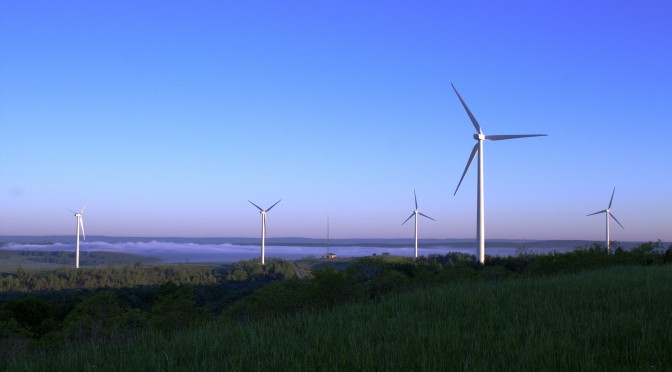One of a new “Windsights” series highlighting insights from the WINDPOWER 2015 Conference & Exhibition – in the words of the experts themselves.
A leading indication of wind energy’s impressive performance as a mainstream and competitive energy source is its continually lowering cost. The cost of wind energy dropped by over 50 percent between 2009 and 2013. Among the factors commonly cited include taller towers and larger rotor diameters, a more expansive supply chain established here in the U.S., and advanced siting techniques.
Improvements in those areas continue. Just as exciting, our industry can and will drive down the cost of wind energy through other means as well. Given that over 48,000 wind turbines are now operational in the U.S., one true opportunity lies in the area of operating and maintenance (O&M) expenses.
No question, the right economic drivers are in place for this to happen. Power purchase agreement prices are coming down, making our product ever-more attractive to energy purchasers but also making the economics of projects tighter. Second, all of those more than 48,000 turbines now deployed are edging closer to a key milestone, if they haven’t reached it already. After being online for 10 years, projects no longer generate the Production Tax Credit (PTC) along with the kilowatt-hours they produce, and so their economics change at that point. With the PTC being a finite resource, the need for operators to find new efficiencies becomes all the more important.
Finally, the merchant market for electricity provides strong motivation for the industry to keep driving down the cost of wind energy via O&M expenses. When wind resources are strong, spot-market prices go down, and that of course narrows margins for project owners and operators. The motivation to reduce O&M expenses increases.
A session at the AWEA WINDPOWER 2015 Conference & Exhibition (May 18-21, Orlando, Fla.) that I will be moderating will examine this issue in depth. Focusing on the role of technology in achieving those O&M expense reductions, the session will provide a unique perspective on new ideas and approaches that will ultimately accelerate cost-reduction, enhance production, and extend asset life. Participating on the panel will be experts from both inside and outside the industry, allowing wind energy to draw on the experience, ideas, and even technology of other industries.
We’ll hear from Dan Shurey, Associate at Bloomberg New Energy Finance, who will kick things off with a market perspective of technology and its role going forward. That will set the stage for comments from Vijay Narayanan, Microsoft’s Director of Algorithms & Data Science, who will discuss machine learning and predictive analysis as he looks at not just the importance of data collection, but how to use that data for the benefit of the owner. Also providing a fresh perspective will be Wearable Intelligence Inc. CEO Yan-David Erlich. If you’re unfamiliar with Wearable Intelligence, just know that the company brought Google Glass wearable technology to the workplace. (Imagine technicians out in the field in the wind industry wearing this technology.)
Reacting to their insights will be two leading members of the wind industry providing OEM and owner/operator perspectives. Providing a turbine manufacturer perspective will be Andy Holt, General Manager of Global Wind Projects & Services at GE Energy, who will address technology development application in the installed base, and new turbines. For the project owner/operator perspective, we’ll go to Brian Hayes, Executive Vice President at EDP Renewables North America LLC, who regularly reviews the application of new technology on their asset base.
Hopefully at WINDPOWER 2015 our discussion will serve as a catalyst for continuing to drive down the cost of wind energy. Tackling operating expenses with technology presents a relatively new opportunity, and these are the kinds of conversations that make it all happen.
For more information go to windpowerexpo.org.


